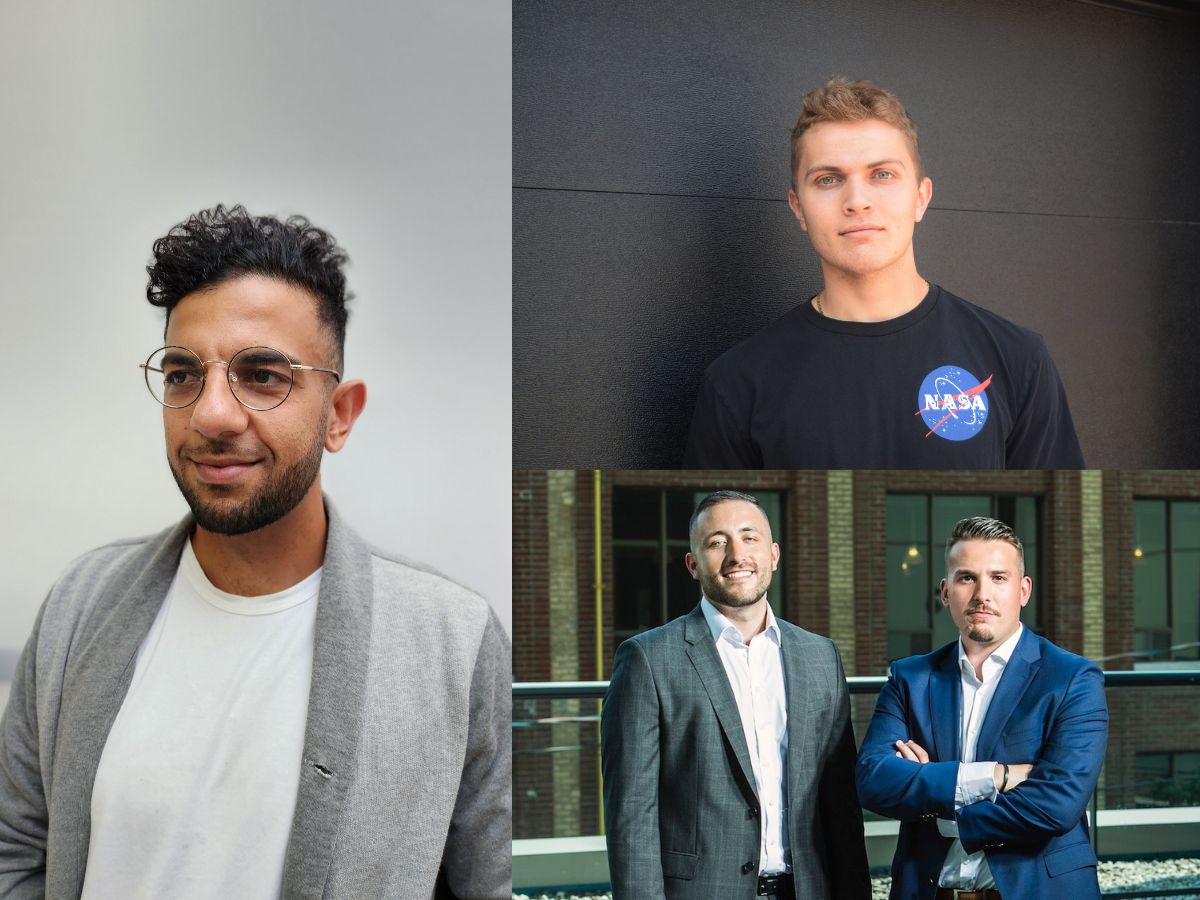In a rapidly evolving creator economy, three leaders on value and differentiation

“I don’t think GM is going to pay me to ghostwrite – they’ll pay Ogilvy and McCann,” says Christian Di Bratto, “but you won’t see the same big-budget commercials in the future.”
A current student at the Ted Rogers School of Management, Di Bratto (Real Estate Management, ‘24) began brokering influencer sponsorship deals (external link) during the pandemic by cold-emailing brands and negotiating an agreement on the influencer’s behalf. $500,000 later, (external link) he transitioned to copywriting for brands, agencies and thought leaders.
“I applied to an UpWork gig, and it happened to be someone I follow on Twitter. I offered to ghostwrite his Twitter,” explains Di Bratto, “and now he’s my biggest retainer. Ideally, I’ll still do cold emails, but it’s been a lot of referrals.”
With social media well beyond the novelty of influencers, content creators are finding new ways to adapt to changing audience preferences and platforms; there’s an expanding class of new media professionals carving space for themselves as copywriters and connectors between brands and talent. They aren’t influencers, but people of influence in their digital corner. As new media professionals acquire more clients and begin scaling their practice, it becomes harder to ignore the need to position themselves as thought leaders – not unlike their clients.
“As a freelancer, you should create your own content, but clients come first,” says Di Bratto. “I’m personally writing for more than ten LinkedIn accounts at one time, so I know how to execute thought leadership, and I see its value. Over time, scaling can lend itself to building that niche.”
Armin Faraji (external link) has been busy scaling horizontally, adding additional content categories to Node (external link) – an influencer marketing platform he built that connects brands with creators.
“Influencers can sign up through our mobile app and connect their TikTok or Instagram account. It takes 24-48 hours to vet creators; based on their location and work, we can send them different content opportunities,” he says.
“Node was originally for restaurants only, but the pandemic forced us to pivot to categories like lifestyle/fitness and skin/beauty,” explains Faraji (Retail Management ‘16 ). “There’s a natural fit with the content creators we acquired on the platform.”
Faraji also started in the “freelance hustle,” running an agency for four years before founding Node. “I wanted to make a much bigger impact in the [influencer] space. We have a product team, but my job is more managing the business and making sure the bills are paid. Node used to be much more demo-based, but now our client acquisition is product-led.”
New media ventures, whether it’s a one-person copywriting team or a scaling platform, serve to problem-solve for clients, creators or both. “Before I write, I think about who is my buyer and what the client gets from working with me,” explains Di Bratto. “You need to be able to offer value from the first outreach email to a prospective client, like offering to write an X (formerly known as Twitter) thread as an example of your work.”
A saturated social media landscape adds new challenges for content creators, agencies or upstart freelancers. In 2014, Mat Micheli (external link) and former classmate, Joe Gagliese, co-founded Viral Nation (external link) , one of the world’s first influencer marketing agencies; less than ten years later, the landscape continues to defy his expectations.
“The industry didn’t exist at the time; all we were doing was educating clients,” says Micheli (Business Management). “We founded Viral Nation in school, but no one knew what we were talking about. We had to convince people that eyeballs are on influencers, and it needs to be your next investment.”
Viral Nations’s value proposition is marrying access to the talent ecosystem with owning a talent agency. “It’s about experience at tech,” explains Micheli. “We have a ton of people that truly shaped influencer marketing.”
“We’re able to sell social as a whole package with technology – including social media monitoring and different enablements,” he adds.
Through the newly-launched Viral Nation Creator OS (external link) , Micheli explains the company was able to create technology to manage its influencer business in real-time.
“We can measure creators and give detailed insights to brands and track performance, measure sentiment, attribution and give a clear view to both creator and enterprise,” he explains. “We already have multiple Fortune 500 companies as onboarded clients.”
Faraji believes investing in technology is not only going to benefit the “behind the scenes” professionals, but the creator economy as a whole. We’re building technology that complements what we’re doing at Node in AI and content creation,” he says. “I’m privileged to be at the cutting edge of technology; my ambition is for Node to be a unicorn – we’re taking big swings here because we’re optimizing for outliers and not average outcomes.”
“I’m passionate about Web3; I think there are interesting applications with AI for creators to build their UGC business more efficiently,” says Faraji.
“I think more people will be conscious of the power they give to platforms. I’m not sure when we will see a true creator-friendly platform. Regarding payouts and profit-sharing, there’s a big question about the next generation of platforms. After all,” he adds, “the platforms’ true IP are the creators.”
Di Bratto expects brands to continue moving away from programmatic media buying to more platform-native content, lowering costs through user-generated content (UGC) instead of generalized, big-budget ads.
“A lot of people on TikTok are selling you the dream and not realizing what goes into it,” says Di Bratto. “Brands need content, and there’s more money to be made than ever, but execution is a matter of putting in the work.”
